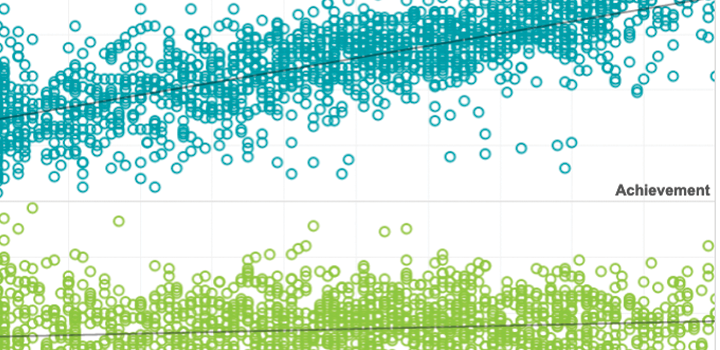

Get it right: Common sense on the common core
In this podcast, Nate Jensen discusses the value of assessments aligned to the Common Core State Standards and the misconceptions that accompanied the implementation of new assessments in some states.
Learning First Alliance, Get It Right podcast


Evaluating content alignment in computerized adaptive testing
This article describes the decisions made in the development of CATs that influence and might threaten content alignment. It outlines a process for evaluating alignment that is sensitive to these threats and gives an empirical example of the process.
By: Norman Webb
Topics: Measurement & scaling


Is Moneyball the next big thing in education?
Predictive analytics in education can offer a benefit as long as educators heed the differences between how the tools are used in industry and how they should be used differently in schooling. Perhaps most important, teachers already know a great deal about their students — far more than an investor knows about a stock or a baseball scout about an up-and-coming pitcher.
By: James Soland


Increasing parental involvement of English language learner families: What the research says
The nearly 10 million English Language Learners (ELLs) represent the fastest-growing segment of the US’s public school student population. While research continually finds that ELL parents, generally speaking, place a high value on their children’s education, many immigrant, refugee, and ELL parents experience their relationships with their children’s schools very differently from mainstream English-speaking families.
By: Beth Tarasawa, Jacqueline Waggoner


Modeling student growth has been a federal policy requirement under No Child Left Behind (NCLB). In addition to tracking student growth, the latest Race To The Top (RTTP) federal education policy stipulates the evaluation of teacher effectiveness from the perspective of added value that teachers contribute to student learning and growth. Student growth modeling and teacher value-added modeling are complex.
Topics: Growth modeling, Measurement & scaling, Student growth & accountability policies


Of particular debate is the impact of transferring from a traditional public school to a charter school on student achievement and growth. We employ propensity score stratification and multilevel models to balance key covariates between treatment and control groups of a cross-state sample of students, which provides a more complex picture of charter school achievement effects in a quasi-experimental context.
By: Beth Tarasawa, Yun Xiang
Topics: Measurement & scaling, Student growth & accountability policies


Effort analysis: Individual score validation of achievement test data
Whenever the purpose of measurement is to inform an inference about a student’s achievement level, it is important that we be able to trust that the student’s test score accurately reflects what that student knows and can do. Such trust requires the assumption that a student’s test event is not unduly influenced by construct-irrelevant factors that could distort his score. This article examines one such factor—test-taking motivation—that tends to induce a person-specific, systematic negative bias on test scores.
By: Steven Wise
Topics: Measurement & scaling, Innovations in reporting & assessment, School & test engagement


